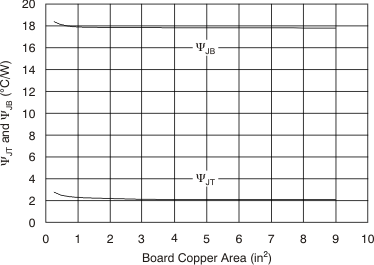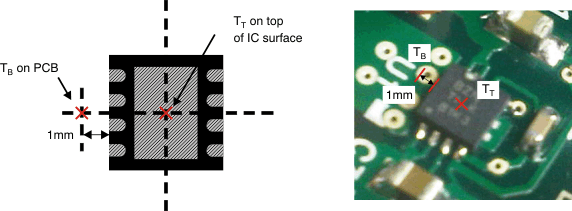JAJS499J June 2010 – January 2018 TPS7A80
PRODUCTION DATA.
10.1.4 Estimating Junction Temperature
Using the thermal metrics ΨJT and ΨJB, as shown in the Thermal Information table, the junction temperature can be estimated with corresponding formulas (given in Equation 6). For backwards compatibility, an older θJC,Top parameter is listed as well.

Where PD is the power dissipation shown by Equation 5, TT is the temperature at the center-top of the IC package, and TB is the PCB temperature measured 1 mm away from the IC package on the PCB surface (as Figure 36 shows).
NOTE
Both TT and TB can be measured on actual application boards using a thermo gun (an infrared thermometer).
For more information about measuring TT and TB, see Using New Thermal Metrics.
By looking at Figure 35, the new thermal metrics (ΨJT and ΨJB) have very little dependency onboard size. That is, using ΨJT or ΨJB with Equation 6 is a good way to estimate TJ by simply measuring TT or TB, regardless of the application board size.
 Figure 35. ΨJT and ΨJB vs Board Size
Figure 35. ΨJT and ΨJB vs Board Size
For a more detailed discussion of why TI does not recommend using θJC(top) to determine thermal characteristics, see Using New Thermal Metrics. For further information, see Semiconductor and IC Package Thermal Metrics.
